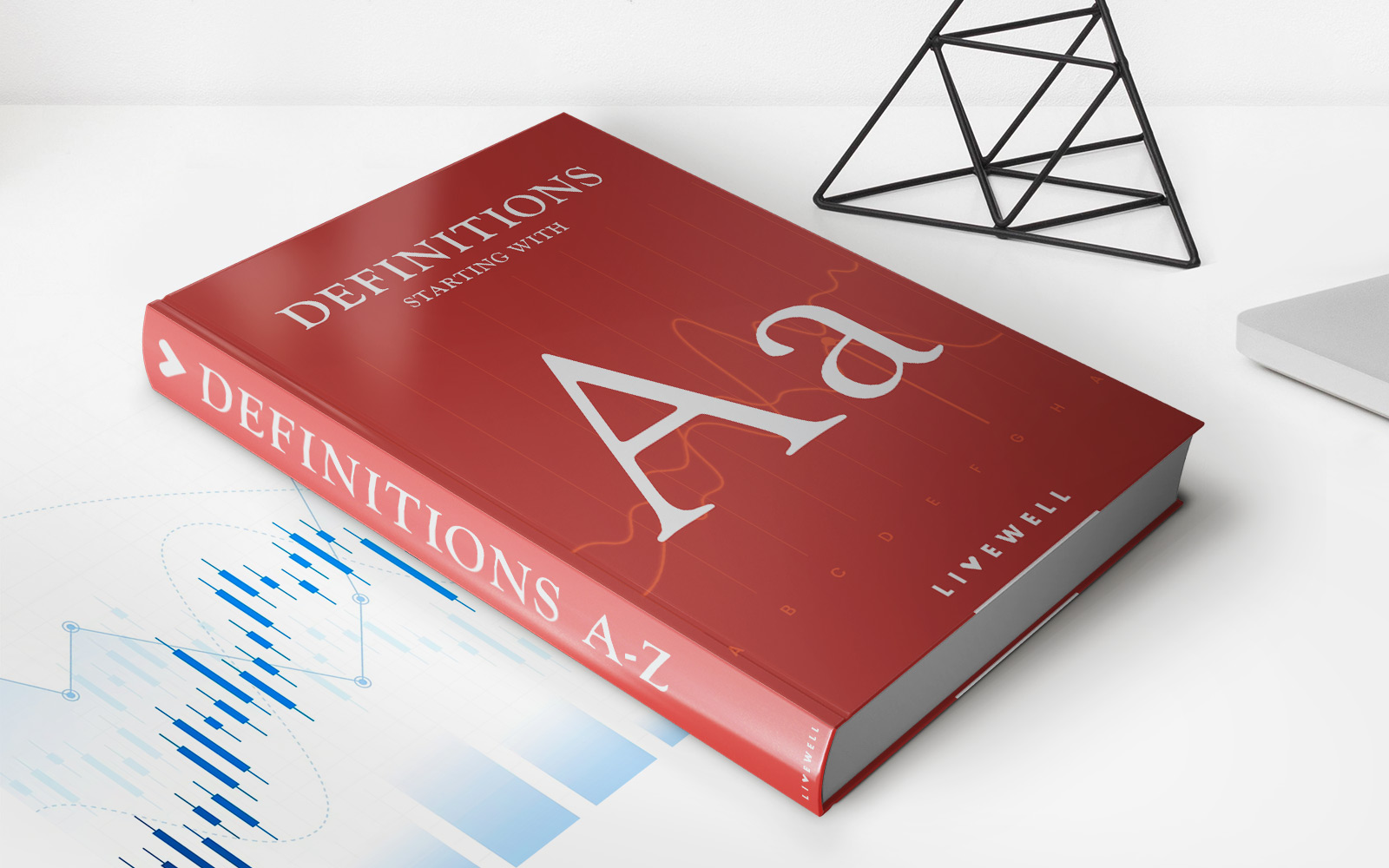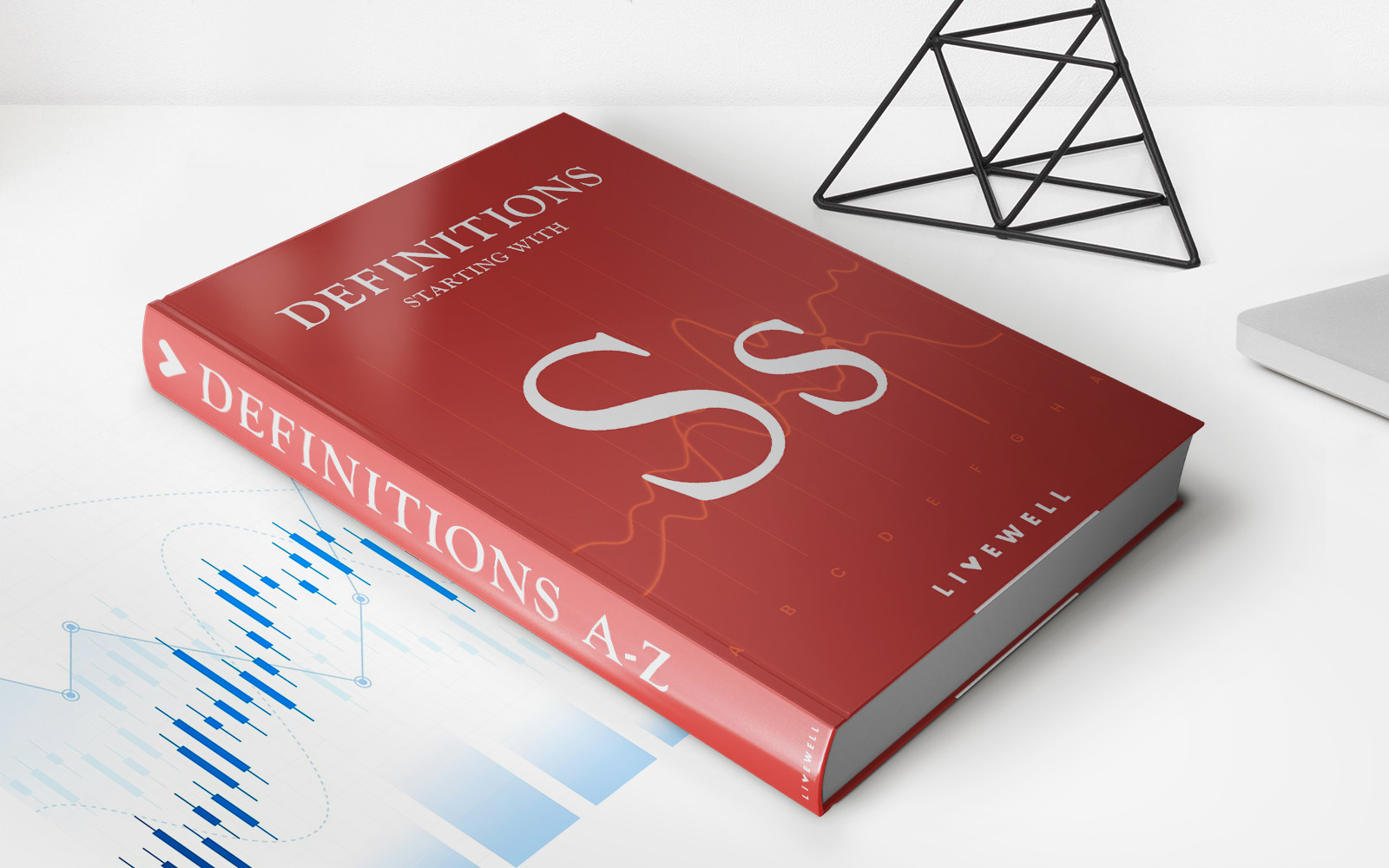Home>Finance>What Does Contingent Mean On A Life Insurance Policy?


Finance
What Does Contingent Mean On A Life Insurance Policy?
Published: November 20, 2023
Learn what the term "contingent" means in relation to a life insurance policy and how it can impact your financial future.
(Many of the links in this article redirect to a specific reviewed product. Your purchase of these products through affiliate links helps to generate commission for LiveWell, at no extra cost. Learn more)
Table of Contents
Introduction
Welcome to the world of life insurance! If you’re researching life insurance policies, you might have come across the term “contingent.” Don’t worry if you’re unsure about its meaning – we’re here to help. In this article, we’ll delve into the concept of contingency in the context of life insurance policies and what it means for you as a policyholder.
Life insurance is a financial protection tool that provides your loved ones with a lump sum payment (known as a death benefit) in the event of your untimely demise. It offers peace of mind by ensuring that your family is financially secure even when you’re no longer able to provide for them. However, navigating through the complexities of life insurance policies can be challenging, and understanding the various terms is crucial to make informed decisions.
One such term is “contingent,” and it refers to certain conditions or events that might occur in relation to your life insurance policy. These contingencies play a significant role in defining how the policy will function and who will be eligible to receive the benefits.
In this article, we’ll explore different aspects of contingency in life insurance policies, including contingent beneficiaries, contingent ownership, contingent assignments, and more. By the end, you’ll have a comprehensive understanding of what contingent means and how it can impact your life insurance coverage.
So, let’s dive into the world of contingencies in life insurance and unravel their significance!
Definition of Contingent
In the context of a life insurance policy, the term “contingent” refers to a condition or event that must occur for a certain action or outcome to take place. It is essentially an if-then scenario, where the fulfillment of the contingency triggers a specific provision within the policy.
Contingencies are an essential part of life insurance contracts as they help determine who is entitled to the benefits and under what circumstances. They provide clarity and certainty to the policyholder and the insurance company, ensuring that the policy functions as intended.
Contingencies are designed to address situations where the primary beneficiary listed in the policy is unable or unwilling to receive the death benefit. It allows for alternative courses of action and ensures that the policy proceeds are distributed in accordance with the policyholder’s wishes or based on predefined rules.
Insurance policies contain specific clauses and provisions that outline the various contingencies and their implications. These contingencies may vary from one policy to another, depending on the terms and conditions set by the insurance provider. It is crucial for policyholders to carefully review and understand these provisions to make informed decisions and ensure that their chosen contingencies align with their objectives and preferences.
It’s important to note that contingencies are not limited to just beneficiaries. They can also apply to other aspects of the policy, such as ownership, premiums, assignments, and more. Each contingency serves a unique purpose and helps manage potential uncertainties and changing circumstances over the course of the policy’s duration.
Now that we have a clear understanding of what contingent means in the context of life insurance, let’s explore how these contingencies manifest in different aspects of a life insurance policy.
Life Insurance Policy Overview
Before delving into the specifics of contingencies, it’s essential to have a basic understanding of how a life insurance policy works.
A life insurance policy is a contractual agreement between the policyholder (the insured) and the insurance company (the insurer). The policyholder pays regular premiums to the insurer in exchange for a death benefit, which is the amount of money that will be paid out upon the insured’s death.
The policy will also specify a policy term or duration, which can be for a fixed number of years or for the insured’s entire life. When the insured passes away during the policy term, the death benefit is paid out to the beneficiary or beneficiaries named in the policy.
Life insurance policies come in various types, such as term life insurance, whole life insurance, or universal life insurance. Each type has its own unique features and benefits, catering to different financial goals and circumstances.
Term life insurance provides coverage for a specific period, such as 10, 20, or 30 years. It offers a straightforward and affordable option, primarily protecting against financial loss in the event of the insured’s death.
Whole life insurance, on the other hand, provides lifelong coverage and comes with a cash value component that grows over time. It also allows for potential policy dividend payments.
Universal life insurance combines the protection of life insurance with an investment component. Policyholders have the flexibility to adjust their premium payments and death benefits based on their changing needs.
Regardless of the policy type, contingencies play a significant role in shaping how the life insurance policy functions and who stands to benefit from it. Understanding these contingencies is crucial for both policyholders and beneficiaries.
Next, we will explore one of the most important contingent aspects of a life insurance policy – the contingent beneficiary.
Contingent Beneficiary
A contingent beneficiary is an individual or entity named in a life insurance policy to receive the death benefit if the primary beneficiary is unable to do so. They are a backup option in case the primary beneficiary predeceases the insured or cannot be located at the time of the insured’s death.
Having a contingent beneficiary ensures that the policy proceeds are distributed according to the policyholder’s wishes, even in unforeseen circumstances. It provides an added layer of protection and helps minimize potential disputes or uncertainties regarding the distribution of the death benefit.
The contingent beneficiary can be named in two ways:
- Contingent Beneficiary by Name: In this case, a specific person or entity is named as the contingent beneficiary. For example, the policy might list a spouse as the primary beneficiary and a child as the contingent beneficiary.
- Contingent Beneficiary by Class: This option allows for flexibility by naming a group or category of individuals as the contingent beneficiaries. For instance, the policy might state that if the primary beneficiary is not alive, the death benefit should be distributed equally among the policyholder’s children.
It’s important to regularly review and update the beneficiary designation to ensure it aligns with your current wishes and circumstances. If a change in circumstances occurs, such as the birth of a child, divorce, or the passing of a beneficiary, it’s crucial to update the policy to reflect the changes accurately.
It’s worth noting that if no contingent beneficiary is named, or if the contingent beneficiary is unable or unwilling to receive the death benefit, the proceeds may be distributed according to the default provisions of the policy or governed by state law. This can create potential complications and delays in the distribution process.
Choosing a contingent beneficiary is an important decision that requires careful consideration. It’s advisable to consult with a financial advisor or an estate planning attorney to ensure that your contingent beneficiary designation aligns with your overall financial and estate planning goals.
Now that we understand the significance of a contingent beneficiary, let’s explore other contingent aspects of a life insurance policy, including contingent ownership and contingent assignment.
Contingent Ownership
In addition to contingent beneficiaries, life insurance policies can also have contingent ownership provisions. Contingent ownership comes into play when the original policyholder wants to transfer ownership rights to someone else in the event of their death or incapacity.
Contingent ownership can be beneficial in various scenarios. For example, a policyholder may want to ensure that their policy remains intact and benefits their chosen heir if they pass away before the policy matures. It can also be useful in estate planning to provide for the smooth transfer of assets and minimize potential tax implications.
Similar to contingent beneficiaries, contingent ownership can be designated in two ways:
- Contingent Ownership by Name: In this case, a specific individual or entity is named as the contingent owner. They would assume ownership if the original policyholder is unable to fulfill their ownership responsibilities.
- Contingent Ownership by Class: This option allows for flexibility by designating a group or category of individuals as the contingent owners. For example, the policy might state that if the original policyholder dies without a named contingent owner, ownership will be transferred to their surviving spouse or children.
Contingent ownership provisions help ensure a smooth transition of ownership in case of unexpected events. They provide clarity and prevent disputes by clearly outlining who will assume ownership responsibilities and safeguard the policy’s integrity.
It’s crucial to review and update contingent ownership provisions as circumstances change. This could include life events such as marriage, divorce, or the birth of a child. Regularly updating the ownership designation avoids potential complications and ensures that the policy aligns with your current wishes and objectives.
It’s important to consult with a qualified financial advisor or an estate planning attorney to determine the most appropriate contingent ownership provisions for your specific situation. They can guide you through the process and help you understand the legal and tax implications of transferring ownership.
Now that we’ve explored contingent beneficiaries and contingent ownership, let’s move on to another important aspect of life insurance policies – contingent assignment.
Contingent Assignment
In the world of life insurance, policyholders have the option to assign their policy to someone else, typically for purposes of collateral or as part of an estate planning strategy. This is known as a policy assignment. However, there may be situations where the original assignee is unable or unwilling to fulfill their responsibilities. In such cases, a contingent assignment comes into play.
A contingent assignment is a provision within a life insurance policy that designates an alternative assignee to assume the rights and responsibilities of the policy if the original assignee is unable to fulfill their obligations. This can occur due to a variety of reasons, such as the death, incapacity, or refusal of the original assignee to accept the assignment.
A contingent assignment provides an added layer of protection and ensures that the policy’s intentions are met even in unexpected circumstances. It helps to safeguard the policyholder’s interests and ensures the continuity of the intended benefits or collateral arrangement.
Similar to contingent beneficiaries and contingent ownership, a contingent assignment can be named in two ways:
- Contingent Assignment by Name: This involves designating a specific individual or entity as the contingent assignee. If the original assignee is unable to fulfill their obligations, the contingent assignee will step in to assume the assignment.
- Contingent Assignment by Class: This option allows for flexibility by designating a group or category of individuals as the contingent assignees. For example, the policy might state that if the original assignee is unable to fulfill their obligations, the assignment will be transferred to their surviving spouse or to a designated family member.
Contingent assignment provisions offer peace of mind to policyholders by ensuring that their policy’s assignment remains effective, even if the original assignee cannot fulfill their duties. It’s important to review and update these provisions as necessary to reflect any changes in circumstances or preferences.
If you’re considering a policy assignment, it’s recommended to consult with a financial advisor or an estate planning attorney who can guide you through the process. They can help you understand the implications of assigning your policy and assist in creating a contingency plan to ensure the smooth execution of the assignment, if needed.
Now that we’ve covered contingent beneficiaries, contingent ownership, and contingent assignment, let’s explore another aspect of life insurance policies – contingent premiums.
Contingent Premium
In the world of life insurance, the premium refers to the amount of money the policyholder pays to the insurance company to maintain the policy’s coverage. It’s a recurring payment that is usually made on a monthly, quarterly, or annual basis. However, there may be circumstances where the policyholder is unable to pay the premium, and that’s when the concept of a contingent premium comes into play.
A contingent premium is a provision within a life insurance policy that allows for the payment of the premium by someone other than the policyholder. This typically occurs if the policyholder becomes unable to make the premium payments due to financial hardship, incapacitation, or other unforeseen circumstances.
The contingent premium provision ensures that the policy remains active and the coverage continues even if the original policyholder is unable to pay the premiums. This provision can be beneficial for policyholders who want to ensure that their life insurance coverage remains intact and their loved ones are protected, even if they face difficulties in making the premium payments.
The contingent premium can be paid by a designated person, such as a family member, a trusted friend, or even a charitable organization. This allows for a safety net, ensuring that the policy doesn’t lapse and the intended beneficiaries receive the death benefit in case of the insured’s passing.
It’s important to note that the contingent premium provision may have certain conditions or limitations specified in the policy. For example, there may be a maximum limit on the duration or amount of contingent premium payments. It’s crucial to carefully review the policy provisions to understand the details of how the contingent premium works in your specific policy.
If you find yourself unable to pay the premium, it’s important to communicate with your insurance provider as soon as possible. They can provide guidance on the options available to you, including the possibility of utilizing the contingent premium provision. It’s important to understand any potential impacts on the policy’s terms and conditions before making a decision.
Now that we’ve covered contingent beneficiaries, contingent ownership, contingent assignment, and contingent premiums, let’s move on to another aspect of life insurance policies – the contingent insured.
Contingent Insured
In a life insurance policy, the insured is the person whose life is being covered by the policy. They are the individual whose death triggers the payment of the death benefit to the beneficiaries. However, there may be circumstances where the original insured becomes unable to fulfill their role, leading to the concept of a contingent insured.
A contingent insured is a provision within a life insurance policy that designates an alternative person to be covered by the policy if the original insured is unable to continue holding that role. Contingent insured provisions are typically put in place to address situations where the original insured develops a significant health issue or becomes uninsurable. This provision allows for the seamless continuation of the life insurance coverage.
The contingent insured can be named in two ways:
- Contingent Insured by Name: In this case, a specific individual is designated as the contingent insured. If the original insured becomes ineligible for coverage, the contingent insured will step in as the new insured.
- Contingent Insured by Relationship: This option allows for flexibility by designating a relationship category instead of naming a specific individual. For example, the policy might state that if the original insured becomes uninsurable, their spouse or child will become the contingent insured.
The purpose of having a contingent insured is to ensure the uninterrupted coverage and protection provided by the life insurance policy. It provides an alternative option for coverage if the original insured is unable to maintain their role due to unforeseen circumstances.
It’s important to review and update the contingent insured provisions as needed, especially if there are changes in the insurability of the original insured or if new individuals need to be designated as the contingent insured. Regularly reviewing and updating the policy safeguards against potential coverage gaps and ensures that the coverage remains aligned with your intentions.
It’s advisable to consult with a financial advisor or an insurance professional to understand the specific details and implications of the contingent insured provision in your policy. They can provide guidance on how to navigate this aspect and ensure that your life insurance coverage meets your needs and objectives.
Now that we’ve explored various aspects of contingencies in life insurance policies, let’s move on to discuss another contingent component – the contingent payee.
Contingent Payee
When it comes to life insurance policies, the death benefit is typically paid out to the designated beneficiary or beneficiaries. However, there may be situations where the originally designated payee is unable to receive the proceeds. In such cases, the concept of a contingent payee comes into play.
A contingent payee is an individual or entity named in a life insurance policy to receive the death benefit if the primary payee is unable or unwilling to do so. This provision ensures that there is a backup option if the original payee is not available or cannot fulfill their role.
The contingent payee can be designated in two ways:
- Contingent Payee by Name: In this case, a specific person or entity is named as the contingent payee. If the primary payee is unable to receive the death benefit, the contingent payee will step in to receive the proceeds.
- Contingent Payee by Class: This option allows for flexibility by designating a group or category of individuals as the contingent payees. For example, the policy might state that if the primary payee cannot be located, the death benefit should be distributed equally among the policyholder’s surviving children.
The contingent payee provision provides an extra layer of protection to ensure the smooth distribution of the death benefit. It helps to prevent delays or complications that may arise when the primary payee is unavailable or cannot accept the payment.
It’s important to review and update the contingent payee designation as circumstances change. This includes life events such as marriage, divorce, or the passing of the primary payee. Regularly reviewing and updating the policy provisions ensures that the death benefit is distributed according to your preferences and aligns with your current situation.
It’s worth noting that if no contingent payee is named and the primary payee is unavailable, the proceeds may be distributed according to the default provisions of the policy or governed by state laws. Therefore, it’s strongly advised to designate a contingent payee to avoid any potential complications or disputes.
Consulting with a financial advisor or an estate planning attorney can provide valuable insights on how to designate a contingent payee and ensure that your life insurance policy reflects your intentions and meets your unique needs.
Now that we’ve covered various aspects of contingencies in life insurance policies, let’s discuss some common contingent clauses that are often included in these policies.
Common Contingent Clauses in Life Insurance Policies
Life insurance policies often include several contingent clauses that outline specific conditions or events that may affect the policy’s coverage or benefits. These clauses are designed to address potential uncertainties and provide guidance on how the policy should function in certain scenarios. Let’s explore some of the common contingent clauses found in life insurance policies:
- Accidental Death Benefit: This clause provides an additional death benefit if the insured’s death is the result of an accident. It typically pays out a higher amount, offering extra financial protection to the beneficiaries in case of accidental death.
- Waiver of Premium: The waiver of premium clause waives the policyholder’s obligation to pay premiums if they become totally disabled and unable to work. The policy coverage continues without the need for premium payments until the insured is no longer disabled.
- Disability Income Rider: This clause provides a supplemental income to the insured if they become disabled and unable to work for an extended period. It ensures that a portion of the policy’s death benefit is available to the insured during their lifetime in case of disability.
- Return of Premium: With the return of premium clause, the insurance company reimburses the policyholder a portion or the entire amount of premiums paid if the insured outlives the policy term. It serves as a form of savings or investment component within the policy.
- Conversion Privilege: The conversion privilege allows the policyholder to convert their term life insurance policy into a permanent life insurance policy without the need for a medical examination. This allows for continued coverage beyond the term period.
These contingent clauses are just a few examples of the various provisions that can be included in life insurance policies. Each policy may have its own unique set of contingencies depending on the terms and conditions set by the insurance provider.
It’s crucial for policyholders to thoroughly review their policy documents and understand the contingencies that are specific to their coverage. This knowledge helps in making informed decisions, ensuring that the policy aligns with their goals, and provides the intended protection for their loved ones.
Now, let’s move on to discussing the importance of understanding these contingent provisions in life insurance policies.
Importance of Understanding Contingent Provisions
Understanding the contingent provisions in your life insurance policy is essential for multiple reasons. Let’s explore the importance of comprehending these provisions:
- Policy Customization: Contingent provisions allow policyholders to customize their life insurance coverage based on their unique needs and circumstances. When you understand the contingencies, you can make informed decisions regarding beneficiary designations, ownership arrangements, premium payment options, and other aspects of your policy.
- Intended Benefits: Contingent provisions ensure that the benefits of your life insurance policy are distributed according to your wishes. By understanding these provisions, you can designate alternative beneficiaries, contingent owners, or assignees, ensuring that the intended individuals or entities receive the death benefit in the event that the primary beneficiaries or owners are unable to do so.
- Policy Continuity: Contingent provisions help maintain the continuity of your life insurance coverage. Whether through contingent insured provisions or waiver of premium clauses, understanding these contingencies allows you to ensure that your policy remains in force and the coverage continues as intended, even in challenging circumstances.
- Financial Planning and Security: Contingent provisions play a crucial role in your overall financial planning and security. They allow you to account for uncertain events and potential changes in your life circumstances. By understanding the contingencies, you can better align your life insurance coverage with your financial goals and provide financial protection to your loved ones.
- Estate Planning: Contingent provisions are vital components of estate planning. They help ensure that your life insurance policy integrates smoothly with your estate plan, minimizing potential tax implications and facilitating the efficient transfer of wealth to your heirs. Understanding these provisions allows you to coordinate your life insurance coverage with other aspects of your estate plan.
It’s important to consider that contingent provisions can vary from one policy to another, depending on the insurance provider and the specific policy terms. Therefore, reviewing your policy documents in detail and seeking clarification from your insurance company or a qualified financial advisor is crucial.
By understanding the contingent provisions in your life insurance policy, you can make informed decisions, protect your loved ones, and ensure the policy functions as intended. Regularly reviewing and updating these provisions as your circumstances change will help you maintain the relevance and effectiveness of your life insurance coverage.
Now that we have explored the importance of understanding contingent provisions, let’s wrap up our discussion.
Conclusion
Understanding the concept of contingency in life insurance policies is crucial for policyholders. Whether it’s contingent beneficiaries, contingent ownership, contingent assignment, contingent premiums, or contingent insured, these provisions shape how the policy functions and who benefits from it.
Contingencies provide a safety net and ensure that the life insurance coverage remains intact even in unforeseen circumstances. They allow policyholders to customize their policies, designate alternative options, and address potential uncertainties that may arise during the policy’s duration.
By comprehending the contingent provisions, policyholders can align their life insurance coverage with their unique goals and circumstances. Regularly reviewing and updating these provisions as life events occur is essential to ensure that the policy remains relevant and effective.
Consulting with a financial advisor or an insurance professional can provide valuable guidance in understanding and navigating these contingencies. They can help you make informed decisions, clarify any questions you may have, and ensure that your life insurance policy meets your needs and objectives.
Remember, life insurance is not just about the death benefit; it’s about protecting your loved ones and providing them with financial security. Understanding the contingencies in your policy empowers you to make the most of your coverage and ensure that your beneficiaries are taken care of when the time comes.
So, take the time to review your life insurance policy, familiarize yourself with the contingent provisions, and consult the necessary experts to ensure your policy aligns with your goals. By doing so, you can have peace of mind knowing that your loved ones will be safeguarded and supported financially, even in your absence.














